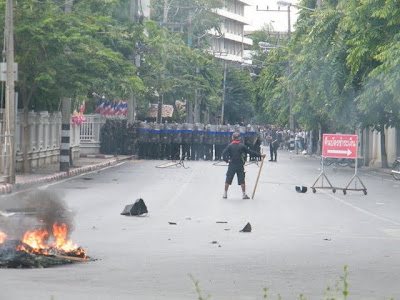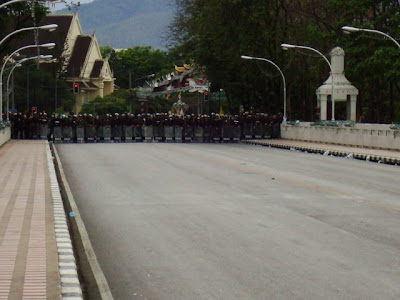This past week, Anders trained the disaster relief team on increasing quality and accountability through Sphere Humanitarian Relief Response Standards. He figured, why re-invent the wheel, when extensive and quality research has already been done?
What Is Sphere
Sphere is a collaborative, time-bound project established by non-governmental organizations (NGOs) in 1997 to increase the quality and accountability of disaster response. It is perhaps best known for the Sphere handbook, which outlines minimum programming standards for disaster response in six key sectors: Water, sanitation and hygiene promotion; food security; nutrition; food aid; shelter, settlement and non-food items; andhealth services.
Who Uses Sphere
Sphere was endorsed by the UN agencies present, particularly for field operations. This endorsement has encouraged OCHA, UNHCR and UNICEF, in particular, to promote the use of Sphere in joint work with NGOs and governments. Sphere's emphasis on consistency, standardization and support of local systems and structures can all contribute to the process of coordination. Within the health sector, the standards promote standardization of important tools and interventions among agencies, including treatment protocols, essential drug lists, health information systems, and referral systems.
Origins
The origins of Sphere lay in the increasing number and complexity of humanitarian crises during the 1990s, which highlighted the need for greater professionalization, consistency and accountability by humanitarian agencies. Specific examples such as the refugee crisis in Goma, Zaire, in 1994 highlighted the fact that when the public health response to emergencies was poorly designed and executed, a large number of preventable deaths could occur. The growing number of humanitarian agencies, each with its own mission, strategies and systems of accountability, further complicated efforts to ensure the quality and predictability of humanitarian assistance. The science and evidence base underlying humanitarian action was relatively under developed up to this period, with few established best practices and no generally agreed upon standards.
Reference: http://www.globalhealth.org/reports/report.php3?id=152
Read More: http://www.sphereproject.org/
Thursday, May 27, 2010
Friday, May 21, 2010
Calming Down?
All are asking if this might be the end to the protests. We sure hope so!
The government underestimated the potential for violence in the wake of the surrender of the red shirt leaders, the prime minister's secretary-general says.

A major centre of Bangkok’s world of glamour is no more as part of the gutted CentralWorld mall comes crashing down after a fire blazed out of control for almost 20 hours.

The widespread looting and arson, the government reported, it wasn't expecting.


As for Chiang Mai, people's nerves seem to be relaxing a little. A curfew is still in effect, the government reports, to bring back some normalcy back to the region.
The government underestimated the potential for violence in the wake of the surrender of the red shirt leaders, the prime minister's secretary-general says.

A major centre of Bangkok’s world of glamour is no more as part of the gutted CentralWorld mall comes crashing down after a fire blazed out of control for almost 20 hours.

The widespread looting and arson, the government reported, it wasn't expecting.


As for Chiang Mai, people's nerves seem to be relaxing a little. A curfew is still in effect, the government reports, to bring back some normalcy back to the region.
Wednesday, May 19, 2010
What Next???
While the High Schoolers here are cheering for school-closure for tomorrow and Friday, many foreigners here are saying enough is enough. But, Thai's and foreigners alike, are all wondering... what next?
Don't worry about us though. We're in safe hands! We'll try to post periodic updates.
Bangkok- Asia's 2nd largest mall, burned to the ground
Protests have now spread to Chiang Mai, the city where we reside.
Riot Police posted in front of the governor's house, which was later lit on fire.

Here a foreigner has had enough

Fighting with sticks and stones... and slingshots

Lovely day in front of Chiang Mai International School

The army out for a nice afternoon stroll

All TVs Switched On Govt Programmes
Published: 19/05/2010 at 07:38 PM
All state-run radio and television networks were instructed to cease their regular programming and switch to special programme arranged by the Centre for the Resolution of Emergency Situation on Wednesday evening.
The move was part of effort by the government to try to bring the ongoing political crisis under control, government spokesman Panithan Wattanayakorn said.
Although some key leaders of the red-shirt protesters surrendered to police in the afternoon, other die-heart protesters refused to budge and went on a rampage by torching about 20 buildings in downtown Bangkok and vandalising other public properties.
Speakers who appeared on the special television programmes this evening called for restoration of national unity so that the country could move forward after a day of violence and destruction.
If you'd like to read minute by minute events, check out our newssources:
http://www.bangkokpost.com
Or translated minute by minute updates here in Chiang Mai.
Don't worry about us though. We're in safe hands! We'll try to post periodic updates.
Bangkok- Asia's 2nd largest mall, burned to the ground
 |
| From May '10 |
Protests have now spread to Chiang Mai, the city where we reside.
Riot Police posted in front of the governor's house, which was later lit on fire.

Here a foreigner has had enough

Fighting with sticks and stones... and slingshots

Lovely day in front of Chiang Mai International School

The army out for a nice afternoon stroll

All TVs Switched On Govt Programmes
Published: 19/05/2010 at 07:38 PM
All state-run radio and television networks were instructed to cease their regular programming and switch to special programme arranged by the Centre for the Resolution of Emergency Situation on Wednesday evening.
The move was part of effort by the government to try to bring the ongoing political crisis under control, government spokesman Panithan Wattanayakorn said.
Although some key leaders of the red-shirt protesters surrendered to police in the afternoon, other die-heart protesters refused to budge and went on a rampage by torching about 20 buildings in downtown Bangkok and vandalising other public properties.
Speakers who appeared on the special television programmes this evening called for restoration of national unity so that the country could move forward after a day of violence and destruction.
If you'd like to read minute by minute events, check out our newssources:
http://www.bangkokpost.com
Or translated minute by minute updates here in Chiang Mai.
Subscribe to:
Posts (Atom)
